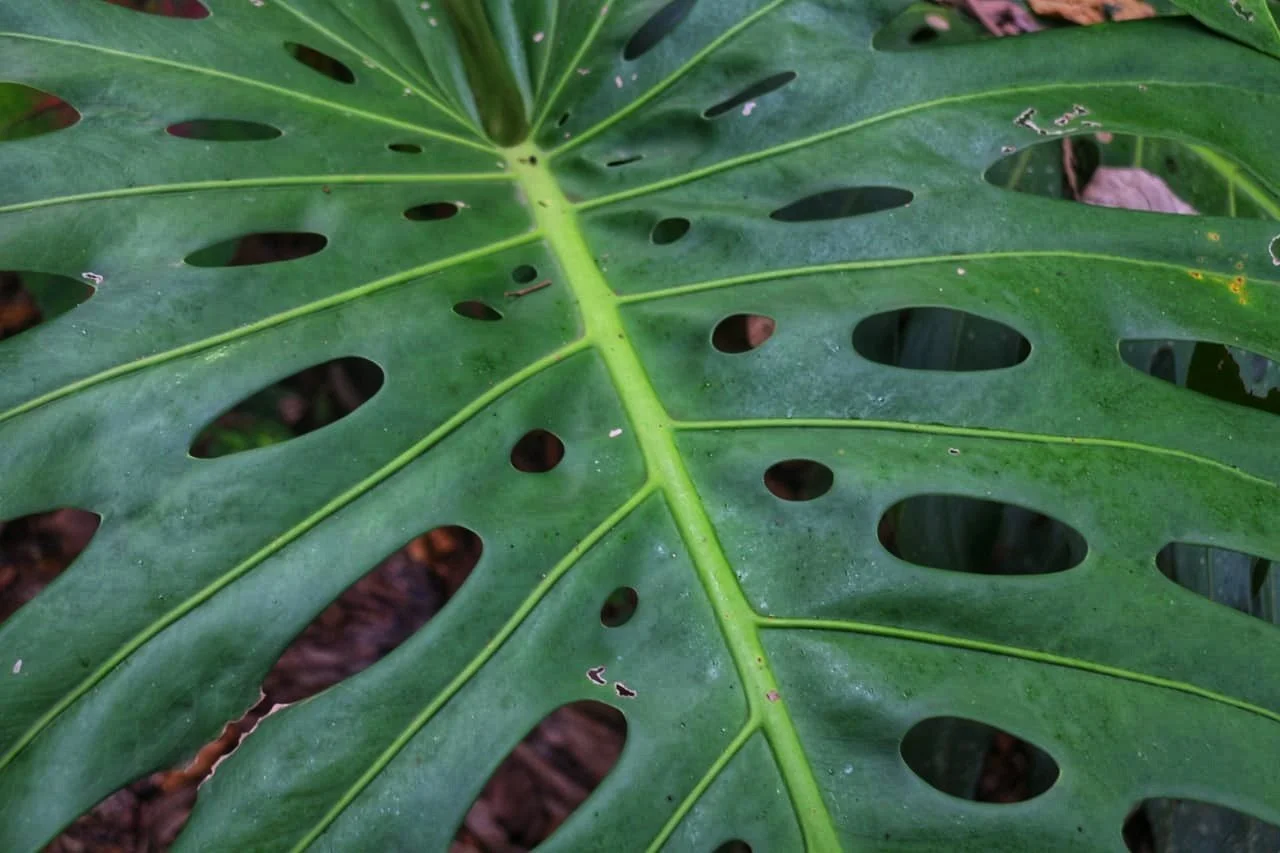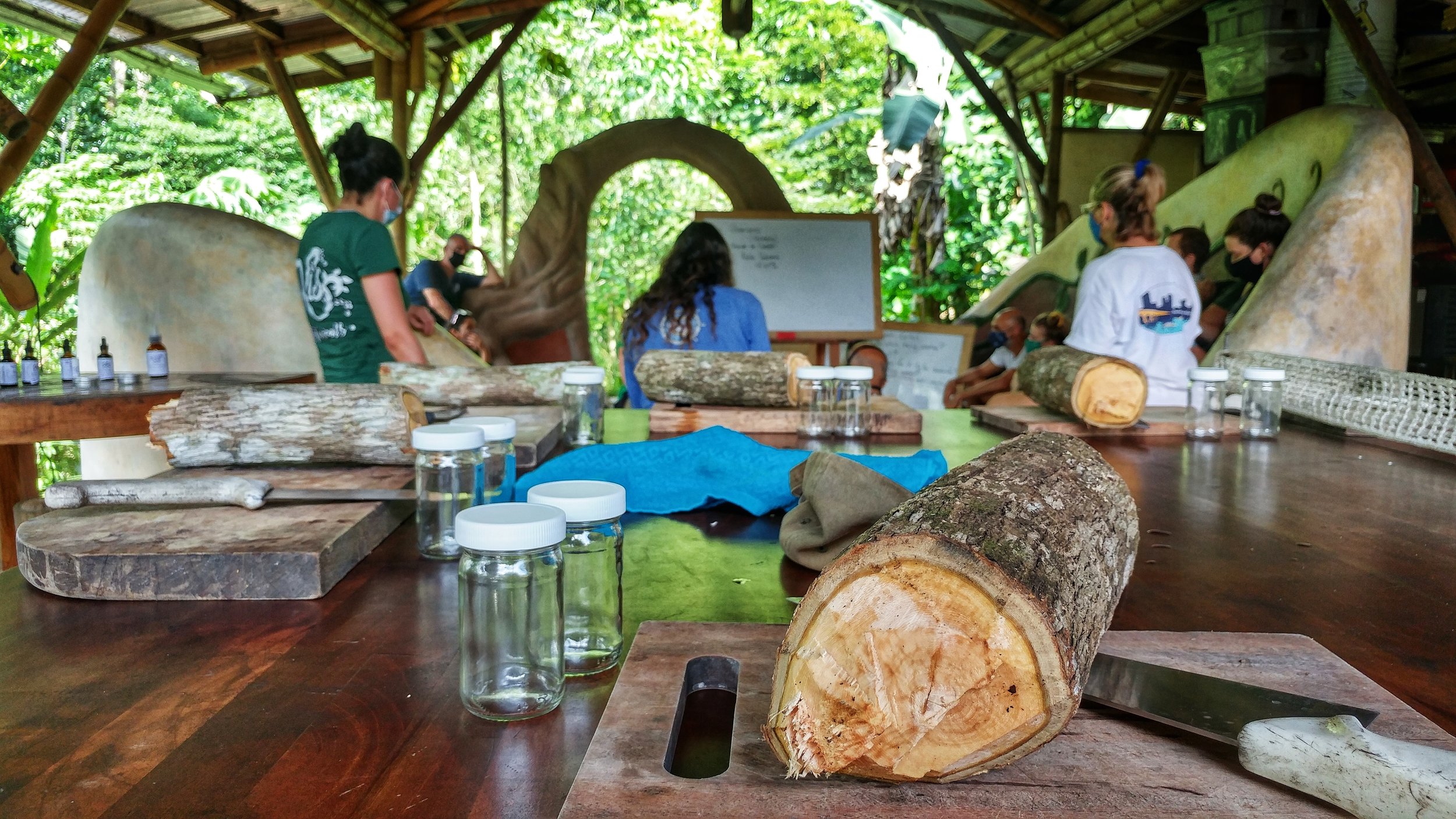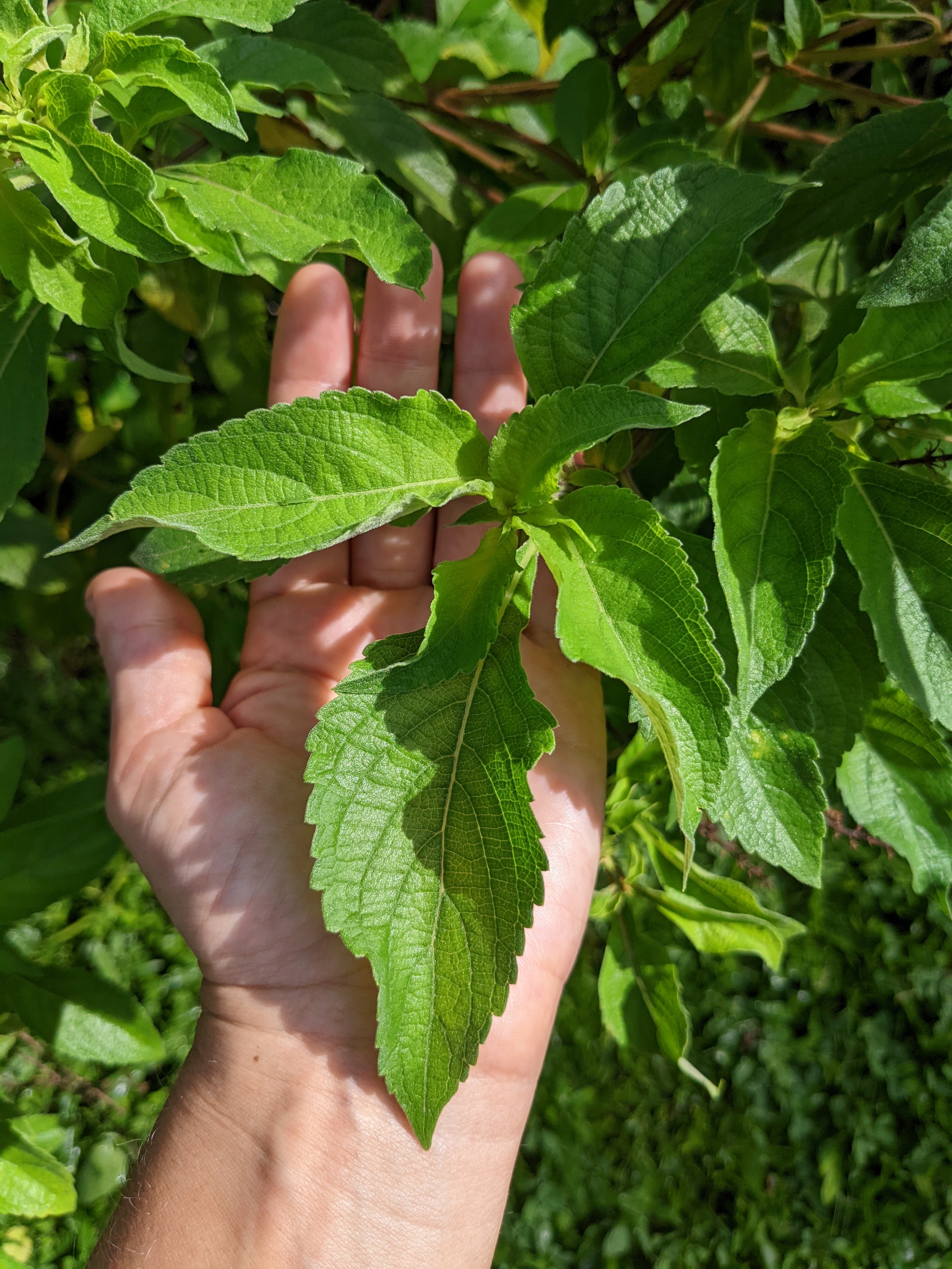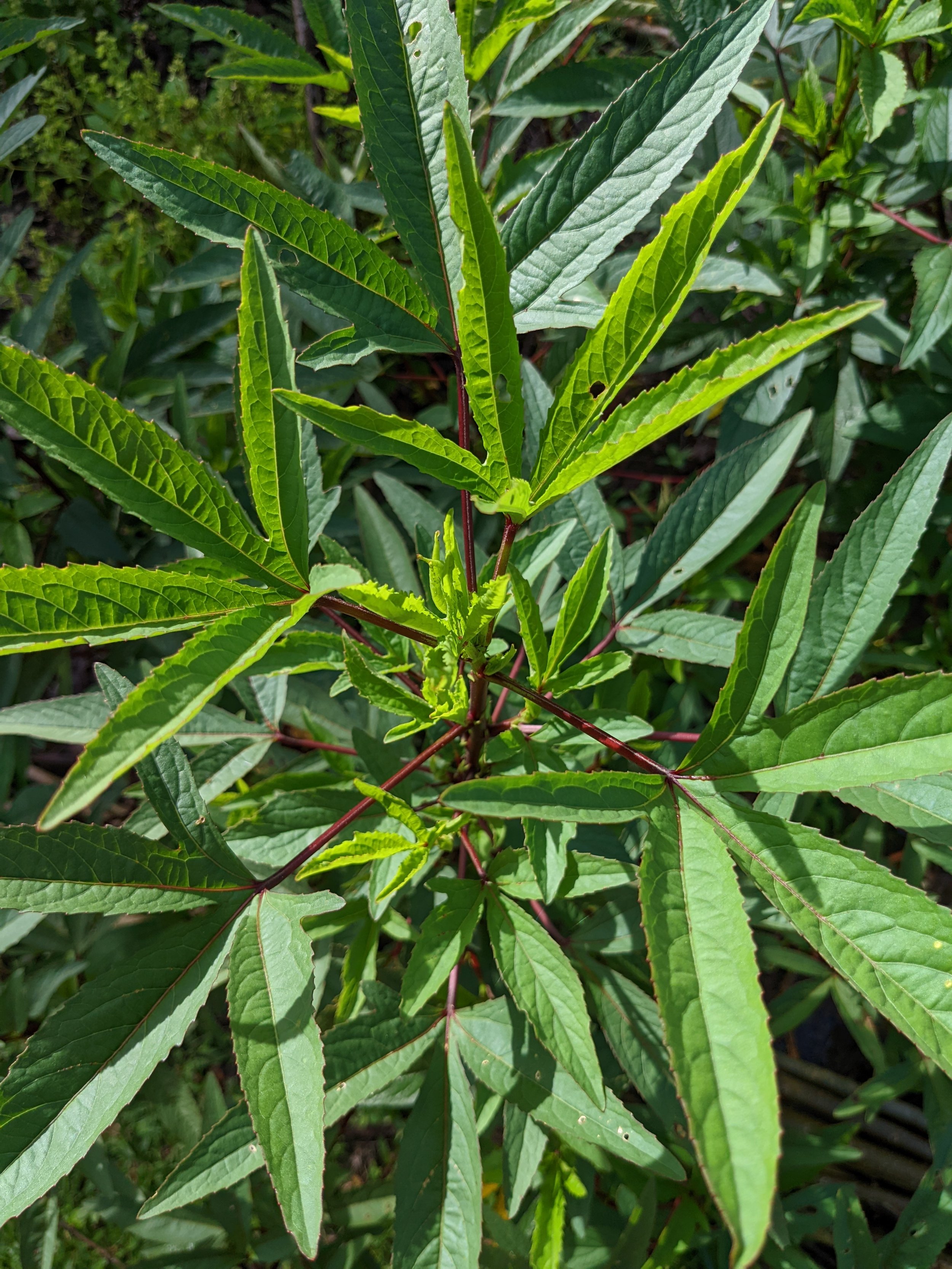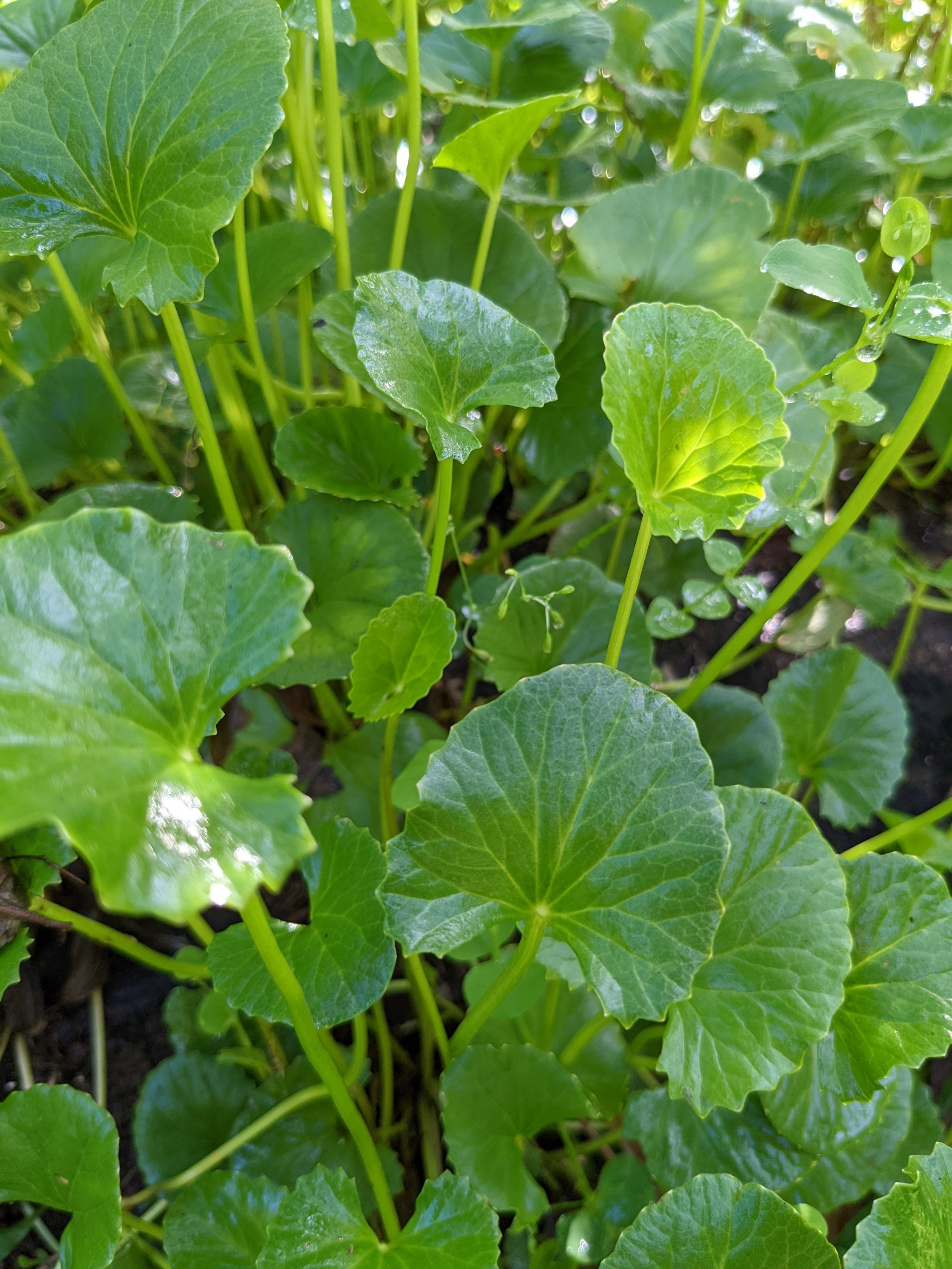Anti-Inflammatory Herbs – Medicinal Plants
By 2022 apprentice Connor Gilmartin
“Watching gardeners label their plants, I vow with all beings to practice the old horticulture, and let the plants identify me” Robert Aitken
This article seeks to bring attention to two plants that possess anti-inflammatory properties, commonly grown in Mastatal, Costa Rica. My goal is to discuss their medicinal properties and suggest simple preparation methods to maximize their efficacy. The plants I will go on to discuss have been shown to bolster your immune system’s response to inflammatory antigens that one is exposed to in urban environments.
Inflammation is a complex physiological and pathological process. It is typically an adaptive response caused by harmful stimuli and conditions to keep the body in homeostasis. When inflammation persists for a long time, “it becomes chronic and can contribute to a variety of chronic diseases, such as obesity, diabetes, arthritis, pancreatitis, cardiovascular, neurodegenerative, metabolic diseases, and some types of cancer” (Peng, et al, 2021). While some diseases are not preventable, many are. We exist in a physiologically, emotionally, and spiritually inflamed world. I firmly believe that we can begin to reduce the effects of this inflammation by utilizing the mosaic of plant medicines revered by our ancestors.
The two plant species I will provide a brief overview of are as follows:
Turmeric (Curcuma longa)
- (Polyphenol, curcumin, anti-inflammation)
Pau d’arco (Tabebuia rosea)
- (Immune stimulant, anti-tumor properties, anti-parasitic)
There are a handful of books that are frequently referenced by Rancho Mastatal’s core team. One of these books is Ed Bernhardt’s, “Medicinal Plants of Costa Rica”. If you live in Costa Rica, and you know what’s best for you, you’ll get a copy – and a backup copy – of this amazing, easy to read book.
Freshly harvested turmeric
Bernhardt introduces turmeric as, “An herbaceous perennial plant of the ginger family with a bright orange rhizome”. It is prolific around Rancho Mastatal – walking along the paths of the Ranch will lead you to encounter turmeric everywhere. Turmeric has a long history of being used for both food and medicine. It has been the primary anti-inflammatory herb of ayurvedic medicine for over 6,000 years. Its principle chemical component, curcumin, has anti-cancer effects and is useful for arthritis through its potent antioxidant action. Capsules of dried, ground turmeric powder have been used to relieve stomach problems, liver and gallbladder diseases, arthritis, colds and flus. In Phyllis Balch’s text, “Prescription for Herbal Healing”, she notes, “… Laboratory studies have confirmed that curcumin has anti-inflammatory and anti-arthritic activity… It has been shown to be effective in reducing pain in patients with osteoarthritis… When used at the equivalent of 200mg of curcumin per day, patients with osteoarthritis were able to use 63% less NSAID medications and still obtain relief from pain”. Turmeric is a gorgeous plant with such massive potential. Pulling its fiery orange rhizomes out of the soft jungle soil is a beautiful experience that I consider a privilege.
The branch of a pau d’arco tree ready to be made into a tincture
Another prolific plant species found around Mastatal is the pink trumpet tree – locally referred to as roble de sabana or pau d’arco. During the transition months of March and May, this tree puts on a dazzling display of soft, silken pink flowers that provide a striking contrast against the bright blue skies. When talking botany with elders and herbalists in the community of Mastatal, pau d’arco is never forgotten. It is revered as highly medicinal across Meso and South America. Ed Bernhart writes, “for centuries, people in the neotropics have used the inner bark of pau d’arco to make powerful botanical medicine that restores the immune system”. It has been cited traditionally to treat anemia, arthritis, asthma, bronchitis, boils, cancer, colitis, colds, coughs, diabetes, dysentery, eczema, fevers, liver infections, leukemia, parasites and wounds. There has been a great deal of research on the medicinal properties of the cambium layer of Tabebuia rosea. Researchers have demonstrated that eighteen of the bark’s many organic compounds have medicinal properties. Some of these organic compounds include quinines; compounds that help cleanse the human body of parasites and harmful protozoa. Another well-documented compound contained in the bark of the pau d’arco is lapachol – an organic alcohol that is responsible for the bark’s anti-cancer and tumor-reducing properties. Ed Bernhardt recommends reading, “Pau d’Arco: Immune Power from the Rainforest” by Kenneth Jones to learn more about the complex organic chemistry of the tree’s medicinal compounds. Pau d’Arco’s cambium layer can be prepared as a tea, or as a tincture. Mature branches must be used in the preparation of this medicine. I recommend further reading about the specifics of pau d’arco preparation as it does require some processing prior to drying the bark for tea, or making the tincture.
A student in our PDC with her homemade tincture
Both of these plants can be dried, powdered, and taken as a supplement in capsule form. Their medicinal properties can also be utilized when prepared in a concentrated tea. In my opinion, the most powerful of all preparations is to utilize ethanoyl as a solvent to extract their alcohol-soluble compounds. This concentrated, plant-based liquid is commonly referred to as a tincture. The precursor to distilled ethyl alcohol could be an herbal wine prepared at-home. You can read about how to prepare a simple, tea, sugar and yeast wine (hooch), at this article, written by an apprentice from 2017.
Realizing that plants can serve as medicine fosters a deeper appreciation of our natural environment and increases one’s sense of place. Looking into a forest and seeing it as a nutrient-rich, sentient ecosystem is something that our not-so-distant ancestors did out of necessity. I believe that if more folks started listening to what our plant teachers had to say, we’d live in a healthier, more reverent, less-inflamed world. As Terence McKenna once said, “Avoid gurus, follow plants”.
Check out these past related blogs
Also join us for our yearly Plants as Medicine Workshop
Learn More
Join us for one of our educational workshops. Learn more here.

